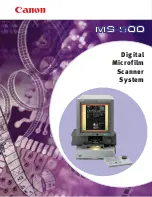
ZScan Manual
36
When acquiring data of the calibration plate, it is important to be as perpendicular to
the plate as possible and to keep the laser cross in the white area of the plate.
Ten measures of the targets on the plate are taken. That data is compared to the known
data of the initial calibration. Depending on the results of the comparison, the calibration
may be accepted or rejected. If accepted, the sensor is ready to scan.
If the calibration fails, some details need to be checked before concluding to a
decalibrated scanner:
1.
There are no reflective objects near the calibration plate. Detection of a false
positioning feature is likely to make the process fail. In that case, remove the
objects and try again.
2.
Verify that the calibration targets are in good condition. Every target on the plate
should be in perfect condition. Even only one damaged or misplaced target will
produce an Optimization failed message.
3.
Click on the Default button in order to restore the calibration to the factory
settings and try the optimization again.
If all these steps fail, please contact Customer Support for further help.
The reflective targets of the calibration plate do not have the
same coating than the ones used for scanning. Because of this,
their sensitivity to exterior contaminants is greater. It is therefore
important not to touch them with your fingers or any other oily
substance.
Proper Scanning Distance
While digitizing, a meter displayed on the left of the screen indicates the distance
between the scanner and the object. This meter is also represented on the scanner by 3
LED located on the upper part of the ZScanner 800 (red, green, red). The table below
illustrates the relationship between the distance meter in ZScan and on the ZScanner 800.
Scanner
is too
close












































